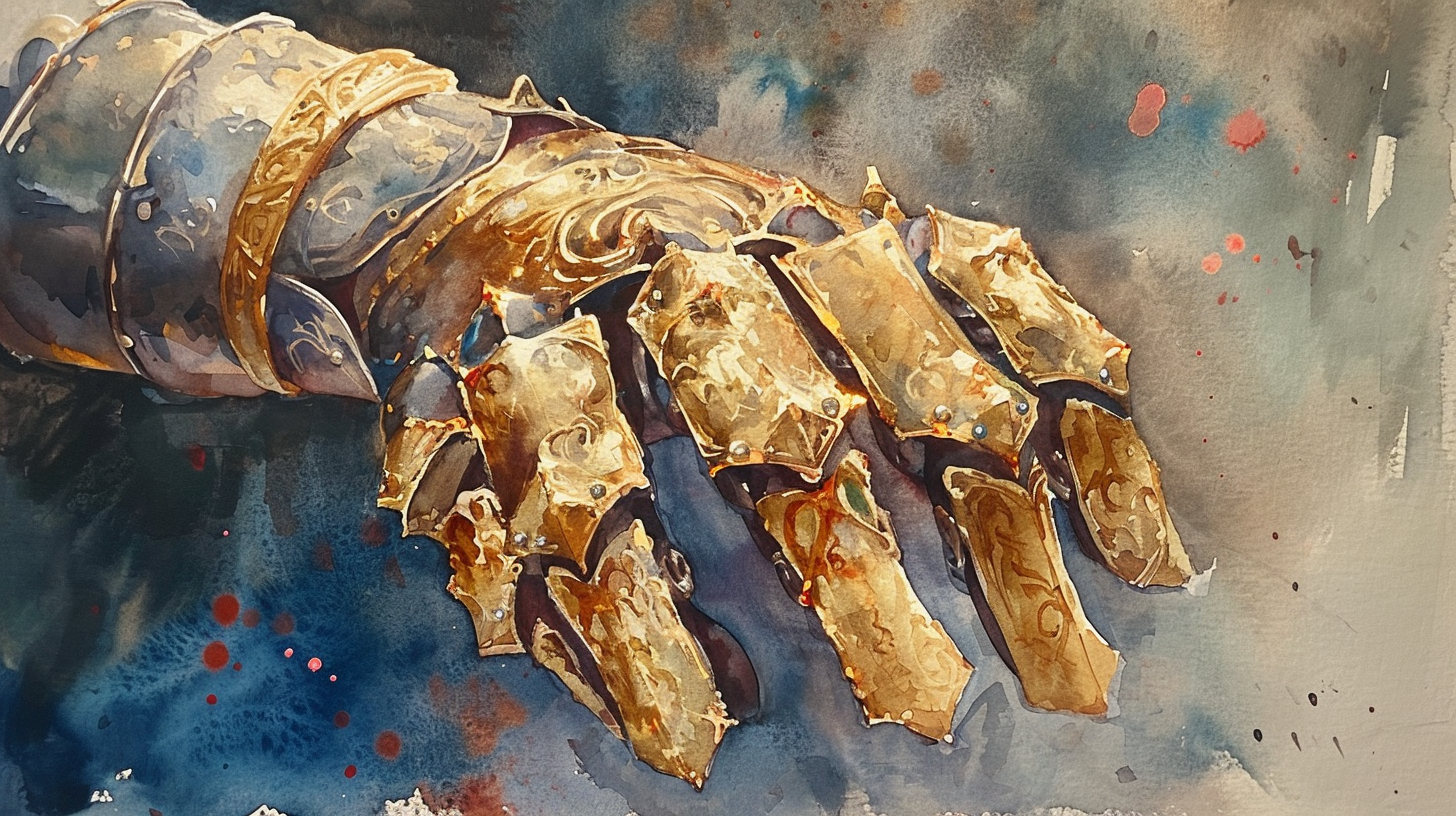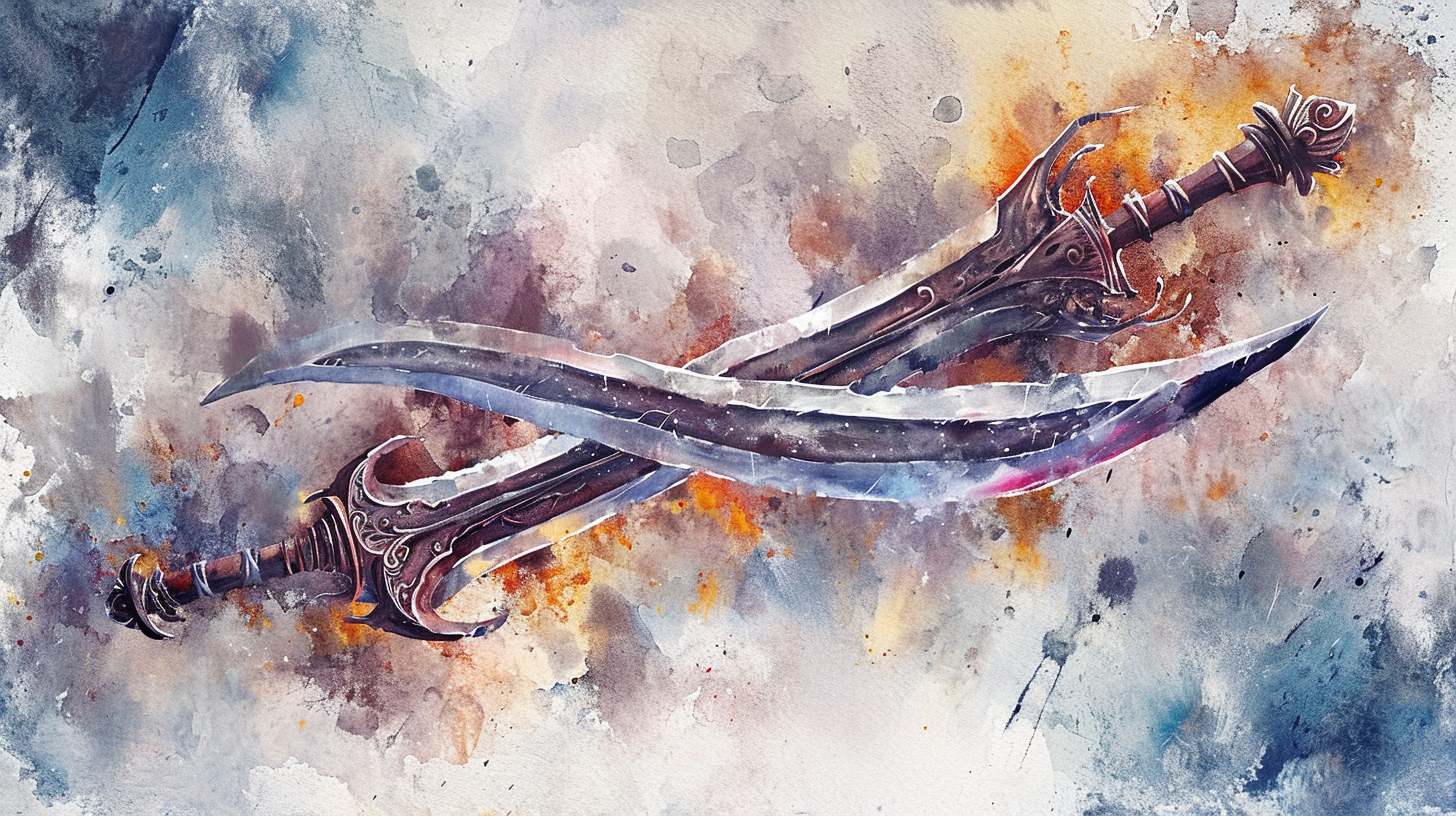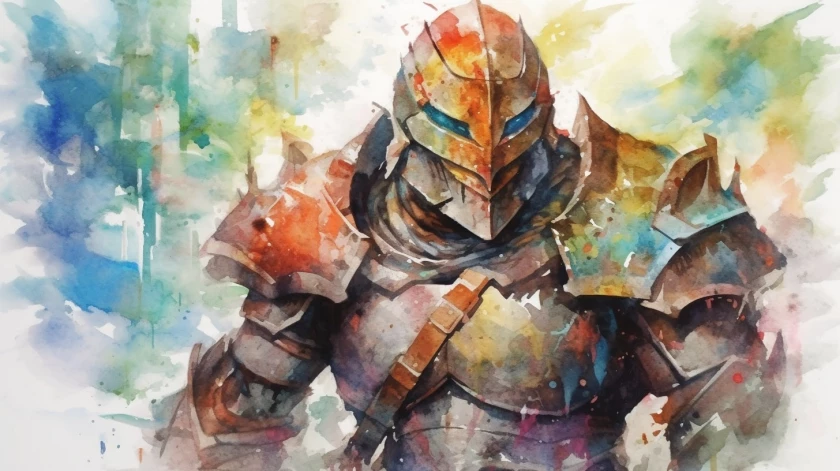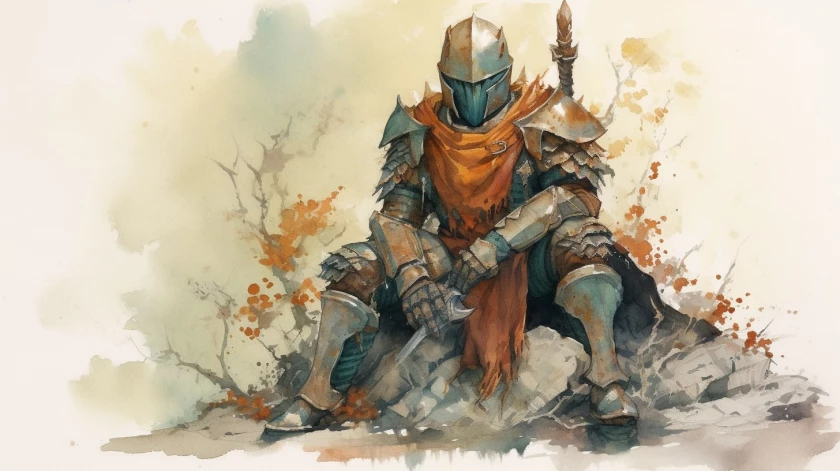Thunder Gauntlets are a feature of the Armorer subclass of the Artificer class. At 3rd level of Artificer, you may choose to play as either an Artillerist, an Alchemist, a Battle Smith, or an Armorer. Armorers modify armor to function almost as a second skin. The armor is enhanced to hone the Artificer’s magic, unleash potent attacks, and generate a formidable defence.
When you play as an Armorer, you may pick one of two features, the Infiltrator or the Guardian.
Guardians design armor to be on the front line of conflict. One of their features is the Thunder Gauntlets.
"Each of the armor’s gauntlets counts as a simple melee weapon while you aren’t holding anything in it, and it deals 1d8 thunder damage on hit. A creature hit by the gauntlet has disadvantage on attack rolls against targets other than you until the start of your next turn, as the armor magically emits a distracting pulse when the create attacks someone else."
Pros And Cons Of Thunder Gauntlets

Looking For A New Character Idea?
Bring your characters to life using our powerful AI driven name generator. It's free to use for everyone.
When you hit a creature with Thunder Gauntlets, you gain a defensive advantage.
The target hit by the gauntlet has disadvantage on attack rolls against targets other than you until the start of your next turn.
This means you can effectively draw the enemy's attention away from your squishier party members, acting as a tank for your team.
Imagine this, your party is in a tight spot, cornered by a horde of goblins. Your wizard is low on health. As the Armorer Artificer, you step forward, gleaming Iron Man suit at the ready. With a successful hit on the goblin chief, they’ll have disadvantage against your spellcaster, making attacking them impractical.

As an artificer, you can use your intelligence modifier when rolling damage with the gauntlets. This is super handy as you will most likely not have super high dexterity or strength, meaning you do more damage where it matters!
Remember, though, that while the Thunder Gauntlets can be a game-changer, they're not a one-size-fits-all solution. Some enemies might have resistance or immunity to thunder damage, and others might have abilities that counteract the gauntlet's aggro-drawing effect.
In the right circumstances, these gauntlets can turn the tide of battle and make your Armorer Artificer a true hero of the story.
Thunder Gauntlets And Two-Weapon Fighting

Two-Weapon Fighting allows you to engage in combat with a weapon in each hand. When you take the Attack action and attack with a light melee weapon that you're holding in one hand, you can use a bonus action to attack with a different light melee weapon that you're holding in the other hand.
However, it's important to note that the Armorer's Thunder Gauntlets, as part of the Armor Model feature, are not light weapons.
The rules for a two-weapon-fighting state:
When you take the Attack action and attack with a light melee weapon that you're holding in one hand, you can use a bonus action to attack with a different light melee weapon that you're holding in the other hand.
Thus, they wouldn't normally qualify for Two-Weapon Fighting. But with the Dual Wielder feat, you can use two-weapon fighting even when the one-handed melee weapons you are wielding aren’t light.
Thunder Gauntlets with The Mobile Feat

An artificer in his power armor moving swiftly on a watercolor background
The Mobile feat in 5e combines incredibly well with Thunder Gauntlets. This feat increases your speed by 10 feet, and when you use the Dash action, difficult terrain doesn't cost you extra movement. But the real winner is this: when you make a melee attack against a creature, you don't provoke opportunity attacks from that creature for the rest of the turn, whether you hit or not.
Scenario time again! You're in the heat of battle, surrounded by foes. You activate your Thunder Gauntlets and strike an enemy, drawing their attention and giving them disadvantage on attacks against your allies. Then, thanks to the Mobile feat, you swiftly move away without provoking an opportunity attack. You've just hit and run, leaving the enemy with a tough choice: chase you (the tanky Armorer who can take the heat), or attack your allies at a disadvantage. Remember, you don’t even have to hit when you make the attack, you just have to make the attack!
Thunder Gauntlets with Booming Blade

Now, let's add Booming Blade into the mix. This cantrip, available to artificers, adds thunder damage to a melee attack if the target willingly moves before your next turn. Here’s a full guide to Booming Blade in 5e
There’s a little bit of controversy here. Booming Blade requires a weapon worth at least 1sp to be used. Check with your DM that your Thunder Gauntlets fulfil that requirement before thundering on!
So, combining the Thunder Gauntlets' attack with Booming Blade. You hit an enemy with your gauntlets, drawing their attention and forcing them to focus their attacks on you. But now, they're also surrounded by the booming energy from your spell. If they decide to chase any of your allies, they'll take that extra damage. That’s on top of the disadvantage they would have from the Thunder Gauntlets! This adds a whole extra incentive for them to focus on you (the armored tank!).
If you combine this with the mobile feat it gets even more sneaky. You can hit your enemy, then move away without provoking an attack. They will then have disadvantage on attacks against your allies AND they will have to suffer an extra 1d8 thunder damage to come after you. Lose-lose for them!
Thunder Gauntlets and Sentinel Feat

Now, let's introduce the Sentinel feat into the equation. This feat is a game-changer for any character looking to control the battlefield. Here are the features provided by Sentinel:
When you hit a creature with an opportunity attack, that creature's speed becomes zero for the rest of the turn. Creatures provoke opportunity attacks from you even if they take the Disengage action before leaving your reach. When a creature makes an attack against a target other than you, you can use your reaction to make a melee weapon attack against the attacking creature. Here’s another scenario: An enemy tries to slip past you to reach your party's spellcaster. Thanks to the Sentinel feat, you get an opportunity attack even though they disengaged. You strike, your Thunder Gauntlets crackling with energy. Not only does your attack stop the enemy in their tracks, but now they're also compelled to focus their attacks on you, not your ally.
This combination of Thunder Gauntlets and the Sentinel feat can create a formidable battlefield presence and allows you to protect your allies against threats even more effectively.
